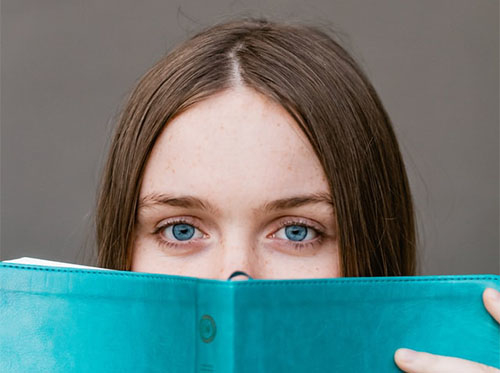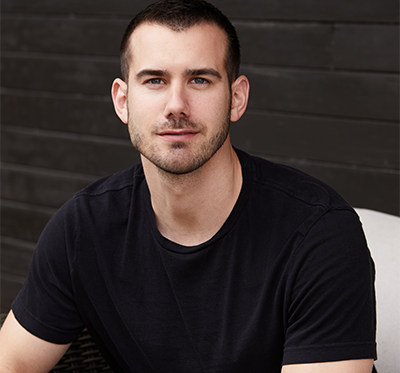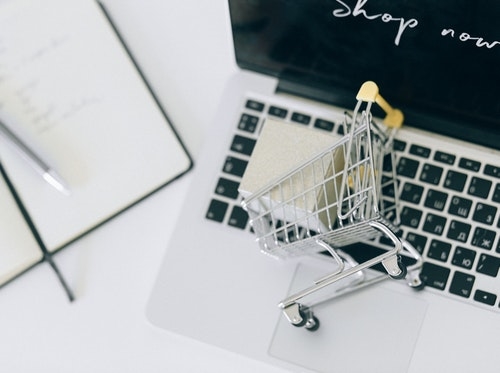Why Only 10% of Beauty Sales are Online, and How to Fix the Consumer “Trust Gap”
In the Beauty industry, only 10% of sales occur online.
The other 90% are through brick-and-mortar retail. In fact, this February Sephora announced it’d be opening 100 new brick-and-mortar stores across North America, the biggest retail expansion in the brand’s history.
For comparison, 35% of apparel sales are made online. And apparel retailers like Victoria Secret (250 storecount), Chicos (250), GAP (230), and JCPenney (204) all announced they’re closing brick-and-mortar stores en masse.
This e-commerce lag is especially significant because the Beauty industry is among the largest consumer sectors ($532B, 6% 5-year CAGR). And it’s especially puzzling considering the central role that digital channels play on the purchase journey in this space (before making a purchase, 95% of consumers search customer reviews and 68% search for User Generated Content on social media).
Why is Beauty lagging behind other major CPG sectors on the transition from traditional retail to e-commerce?
Cosmetics are widely available for purchase online and consumers are aware of this option. But when it comes to buying Beauty products, consumers prefer the in-store experience over the e-commerce experience. 67% still prefer to buy these products in stores.
But why do Beauty shoppers prefer a purchase channel that, for better or worse, is viewed across many other consumer sectors as a more antiquated and friction-full experience?
In his book, The Four, Scott Galloway describes why department stores took off in the 20th century:
“The notion of differentiation through service, and of becoming the customer’s temporary friend and shopping guide, broke new ground. It humanized large-scale retailing and redirected investing towards human capital at the store level…Harry Selfridge coined the phrase ‘the customer is always right’ —which at the time might have appeared weak and obsequious. In fact, it was profound and far-reaching: four of the five oldest surviving retailers are department stores: Bloomingdale’s, Macy’s, Lord & Taylor, and Brooks Brothers”.
To this day, department stores, including makeup retailers like Sephora and Ulta, remain the leading destination for Beauty purchases—despite the ubiquity of Amazon, Beauty influencers, and other digital hubs for Beauty content and commerce . It’s because department stores continue to execute on this personalized “human touch” better than any online competitor or counterpart.
We at RockWater believe this disconnect between the experience of the in-store and e-commerce beauty shopper comes down to the “try-on gap” and the “trust gap”.
The “try-on gap” emerges from inability to try on products outside of a brick-and-mortar environment. This issue isn’t exclusive to the Beauty space, but it’s more sharply felt because there are so many variations on color shades, ingredients, and textures – all of which have to be compatible with buyer’s skin (vs. apparel, where size assortment is mostly limited to small, medium, and large). For example, BareMinerals has 35 shades of foundation to accommodate all skin tone variations—forcing interested shoppers to decipher between descriptors like “olive undertones”, “gold’, and “sand” to find the right match for their specific complexion.
The “trust gap”, on the other hand, not only stems from the lack of in real life (“IRL”) interaction between the consumer and the product, but also between the consumer and the salesperson. The beauty space is crowded, fragmented, and noisey—often requiring the aid of a salesperson to help navigate the plethora of options to find the products that are right for you. It’s over-saturated with products (100,000+ SKUs, and Sephora alone carries 800+ different moisturizers), ingredients (+90M Google searches for specific natural Beauty ingredients last year), and opinions (by 2016 there were already +5M beauty videos on YouTube)—making that “temporary friend and shopping guide” an essential resource, ensuring that you can trust the product you’re purchasing is the right one for you.
Beauty consumers feel overwhelmed and they simply want to find the product that’s right for them.
That’s why, even after discovering and researching products online, Beauty shoppers still prefer to make the final purchase in a brick-and-mortar environment. All of the Beauty content online is only taking the customers so far. Before making a final purchase, they want the personalized one-on-one experience of talking to a salesperson about their specific needs, and trying out products to see which ones feel best.
So how can Beauty brands, retailers, and platforms close the digital sales gap?
Many beauty brands are attempting to solve the lingering chasm between retail and digital sales by focusing on the “try-on gap”, however the “trust gap” is being overlooked.
Top brands and retailers are investing in Augmented Reality products that enable “virtual try-ons” and “skin-matching”. This makes sense, as 37% of in-store Beauty buyers say that seeing and touching the product is what matters most to them. However, a survey of online Beauty shoppers indicates that these virtual tools are actually the least important factor for them. Perhaps an indication that the technology isn’t yet sophisticated enough to suitably replicate the IRL try-on experience.
Augmented reality will improve, and the “try-on gap” will narrow (the “try before you buy” model pioneered by StitchFix and Warby Parker is a great low-tech strategy to address this issue). But in the meantime, we believe that focusing on the “trust gap” will dramatically accelerate digital transformation in Beauty commerce.
How can Beauty brands, retailers, and creators leverage technology to close the “trust gap”?
One word: personalization.
Digital Beauty content—from videos, to tutorials, product reviews, and regimen guides—is static and impersonal. This may be sufficient for other CPG sectors but it clearly isn’t enough to move Beauty buyers through the point of purchase. The personalized “human touch” of the in-store experience—discussing your personal needs, preferences, and conditions with a knowledgeable salesperson, and browsing the products to see which feels best to you—has proven to be an irreplaceable component of the sales process.
It’s therefore unsurprising that, according to 52% of online Beauty shoppers, the most appealing feature of the e-commerce experience, live salesperson chat tools is the most popular feature.
But how else can digital channels replicate the personalized “human touch” of the brick-and-mortar Beauty shopping experience?
Innovating the Influencer Revenue Model
With 88B views of Beauty influencer videos on Youtube annually and 19B #beauty video views on TikTok, the practice of driving purchasing decisions through acting as the customer’s “temporary friend and shopping guide” has certainly translated to digital environments. In many respects, the modern Beauty influencer has replaced the role of the department store sales associate…and merged it with the role of the “cover girl” tastemaker. And for good reason. The influencer boom of the 2010s completely revolutionized Beauty, democratizing expertise and cultural capital, and making cosmetics more approachable for the average consumer.
As a result, 62% of women follow Beauty influencers on social media, and watch time for Beauty influencer videos on YouTube has increased by 75% YOY. But although social content powers discovery and education for the masses, it has failed to bring viewers through the point of purchase online.
This speaks to the “trust gap”.
Although 67% of digital Beauty content is paid for by brand sponsors (Estée Lauder spends 75% of its marketing budget on influencers), 86% of the 200 most-viewed Beauty videos on YouTube are not sponsored or brand-supported. This may be because only 20% of consumers trust sponsored content.
To be clear, sponsored content encompasses paid influencer campaigns, videos published by brand channels and/or amplified via paid reach, and much more. This is different than unpaid influencer content, which is content created by an online personality without funding by a 3rd party.
Influencer content is highly trusted.
So trusted that influencers now play an essential role in the Beauty ecosystem. However, Beauty has become oversaturated with sponsored content. We therefore believe the influencer revenue model can be enhanced to close the “trust gap” and create more online conversions from content to commerce.
Scott Galloway explains that department stores successfully unlocked the “human touch” that enabled their customer-first vision by properly incentivizing their salespeople:
“Floor associates were paid and trained via a novel concept – the sales commission”.
When tastemakers are paid by brands to promote products, the trust that makes their endorsement so valuable in the first place can be diluted—especially if the ad campaign is not well developed and managed. But when an influencer genuinely loves a product, and then they get paid to promote it, the content is genuine. The trust is solid. Young consumers are savvy and they can sense that. But, when dollars incent inauthentic messaging, the “trust gap” deteriorates.
In China’s $100B+ livestream shopping economy (which we recently profiled), the influencer hosts pick products they genuinely love and recommend, and they take a commission on the products that they directly sell. If this revenue structure were adopted in the US, the upfront money would likely be less than what Estée Lauder would pay for a branded campaign. However, could the trust generated from a commission or rev-share structure lead to a substantial boost in total sales volume? Would this increased volume then ultimately translate to increased revenue for creators?
Beauty brands and creators must strive to find the optimal combination of brand sponsorship and commission fees to maximize both revenue and consumer trust.
And of course, for consumers, closing this trust gap will make consumers more likely to take advantage of the convenience of e-commerce, rather than going to the store for the input of a salesperson. Sponsored content still has a major and fast-growing role to play in Beauty, but overall it’s important that creators have more, not less, revenue channels. The addition of more influencer-driven revenue strategies that aren’t solely reliant on ad dollars will help both creators and consumers, while also amplifying the brands that influencers genuinely love and endorse.
Outside of commission models, new forms of content monetization are emerging that can help close the trust gap.
For example, micro-subscriptions (e.g. OnlyFans), a-la-carte transactions / TVOD (e.g. Masterclass, Cameo), and virtual tip jars (e.g. Patreon, Twitch) would all provide ways for experts and influencers in the Beauty space to monetize their followings while maintaining the trust upon which those followings are built. We believe consumers would be willing to support their favorite creators in order to uphold the credibility of their content.
Interactive Content
Content creators in the Beauty space can more effectively replicate the “human touch” of retail shopping and convert viewers into buyers by making their content more interactive. As we recently covered, livestream selling has been so effective in China, in large part because of the two-way interactivity—both between the host and the viewers, and amongst the viewers in the chat.
Beauty has been one of the biggest beneficiaries of the livestream selling boom. Like how Chinese Beauty influencer Li Jiaqi once sold 15,000 units of lipstick in just five minutes over a livestream.
On-air hosts blend the roles of Sephora salesperson and social media influencer, answering real-time viewer questions on topics like texture, ingredients, and personal preferences.
Additionally, Beauty content can take a page out of eSports’ playbook by adding personalized graphic overlays that personalizes the content to the preferences of the user (e.g. how does the moisturizer being discussed in the video work with MY skin, given MY regimen, and MY style?).
Approach Beauty as Health and Wellness…Not Just Products
It may sound counterintuitive, but to drive more e-commerce sales, Beauty brands and creators need to focus less on simply marketing and selling products, and more on cultivating the lifestyle and routines in which those products are used.
The Health and Wellness space exemplifies this approach. It may start with the gym membership or workout equipment, but the flywheel quickly expands to incorporate what you’re wearing to the gym, what you’re eating / drinking before, during, and after—and even what you’re applying to your skin after your workout. Lululemon’s recent acquisition of home-workout company Mirror embodies this strategy.
Beauty has become an important part of this expanding lifestyle ecosystem. Vimla Black Gupta, the CMO of Equinox, explains:
“To say there’s a convergence of fitness, wellness and beauty is an understatement. They are all the same.”
The best and most lucrative technology companies across fitness, health, and wellness—such as Calm ($1B valuation), Mirror ($500M), Peloton ($19B market cap), Noom ($237M annual revenue), FitBit ($1.7B valuation) and Headspace (recently raised a $93M Series C)—are all personalized customer-first solutions that help users develop and maintain healthier habits.
The technology currently being deployed in Beauty is simply about matching the consumer with a product and making the sale. Counterintuitively, that approach is stifling e-commerce conversions.
Beauty brands need to build consumer trust before they can build e-commerce empires. They should be investing in premium “edutainment” content to help overwhelmed consumers make sense of the countless products and ingredients that are out there. They should be investing in artificial intelligence, machine learning, and data-driven mobile products that personalize the Beauty ritual (not just products – but routines, regimens, and education…the sales will come once the brand trust and product “stickiness” does).
The successful Health and Wellness products listed above have all become essential resources in the daily routines of their users. Virtual coaches that keep them on track and provide personalized paths forward. Rather than just being there to advise and educate consumers when they’re ready to buy a new product, be there for them every day. And then when they’re ready to buy a new product, you’ll have their trust, and they’ll come to you again.
So What?
During the COVID crisis, we’ve seen the “at-home-ification” of nearly every industry (RockWater wrote about how this affects the food and beverage industry).
As a result, Beauty e-commerce sales have skyrocketed from 10% of total sales pre-COVID to 90% today. The 67% of consumers who prefer the brick-and-mortar experience, due to the necessity of the moment, are now being forced to buy online. This may be a make-or-break moment.
Will the consumers who are being exposed to this new way of shopping love it and never look back? Or will it make them miss the good old days of person-to-person IRL shopping?
We’re energized by gaps in the marketplace that provide opportunities for growth and innovation. And in the Beauty space, like in many of the others that we’ve covered and worked across, the key to owning the next generation consumer is customer delight.
To capitalize on this moment, and use it as a catalyst for digital transformation, Beauty brands and creators must focus on closing the “trust gap” through providing a personalized customer-first approach to the millions of beauty shoppers who refuse to sacrifice “the human touch” of brick-and-mortar for the convenience of e-commerce.
—
Ping us here at anytime. We love to hear from our readers.



